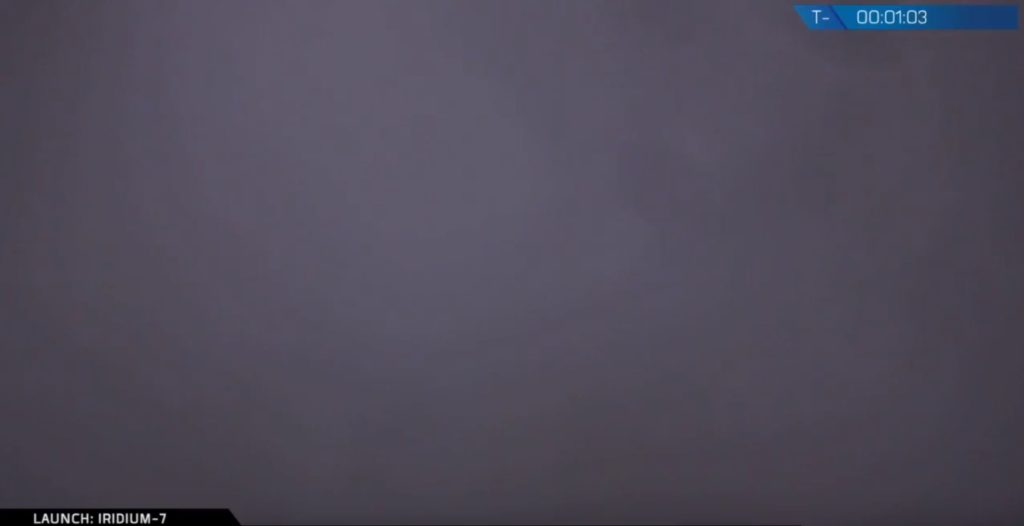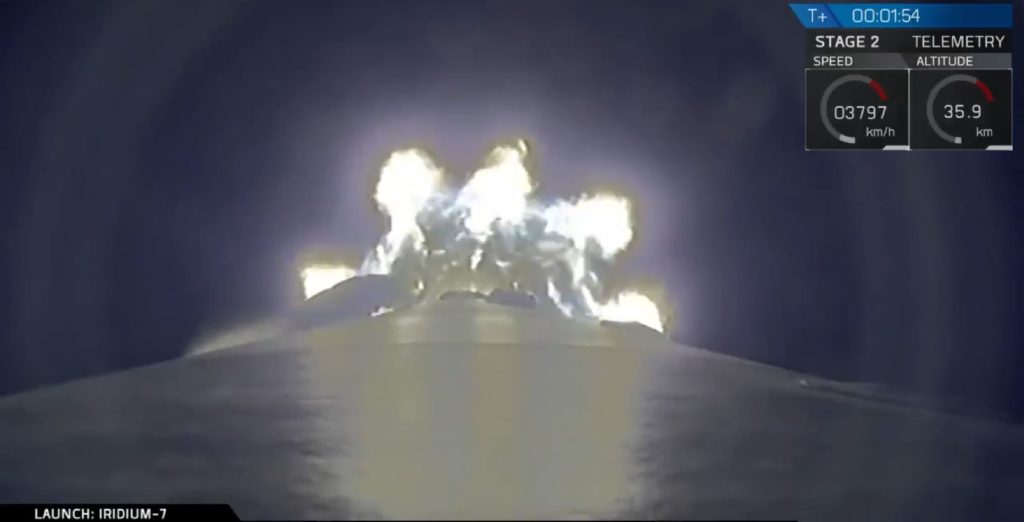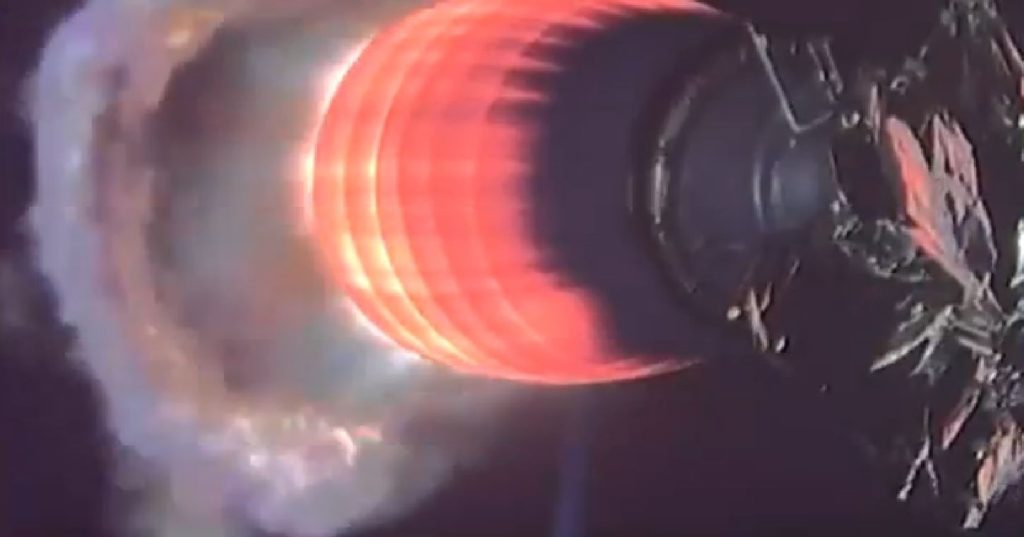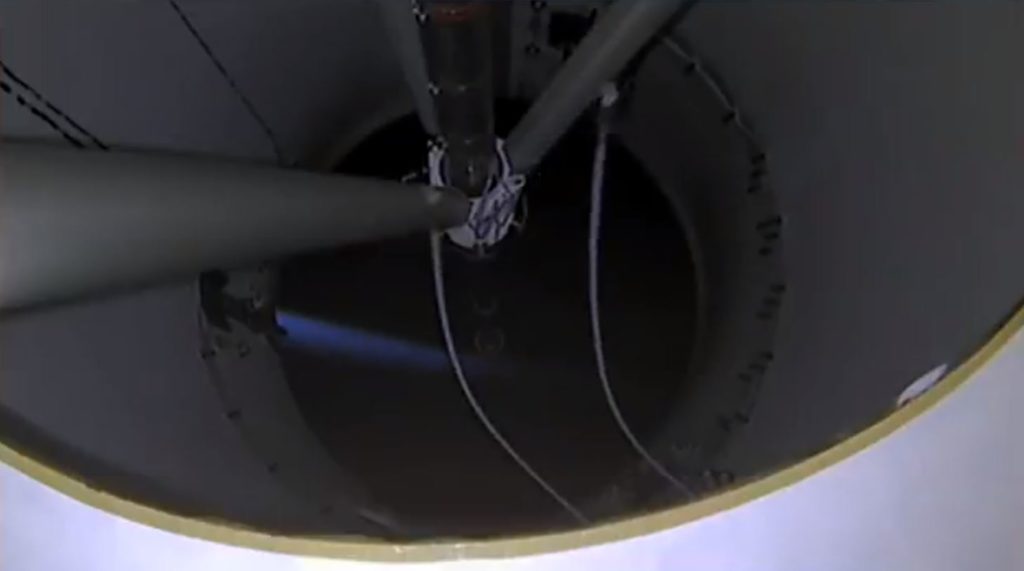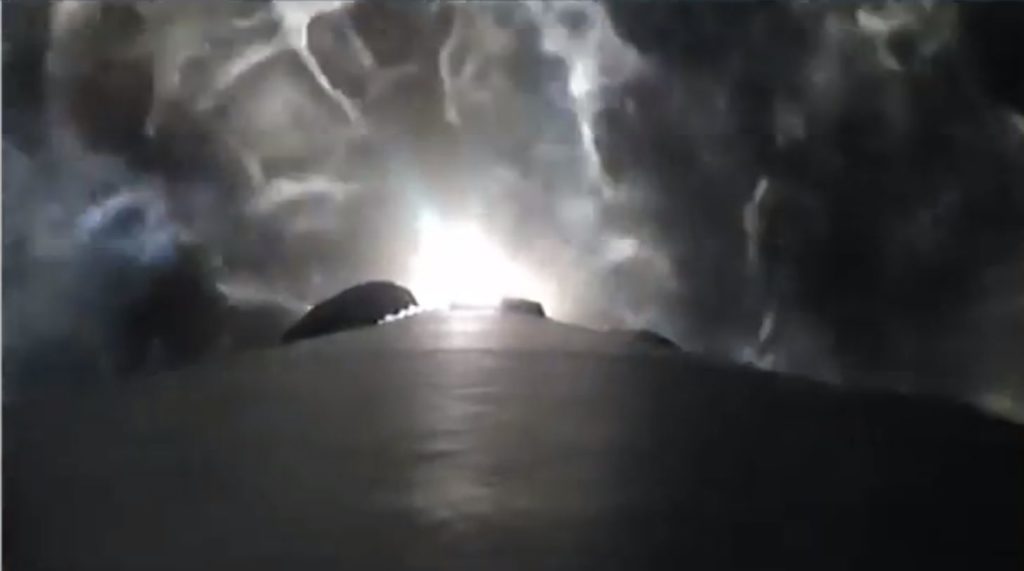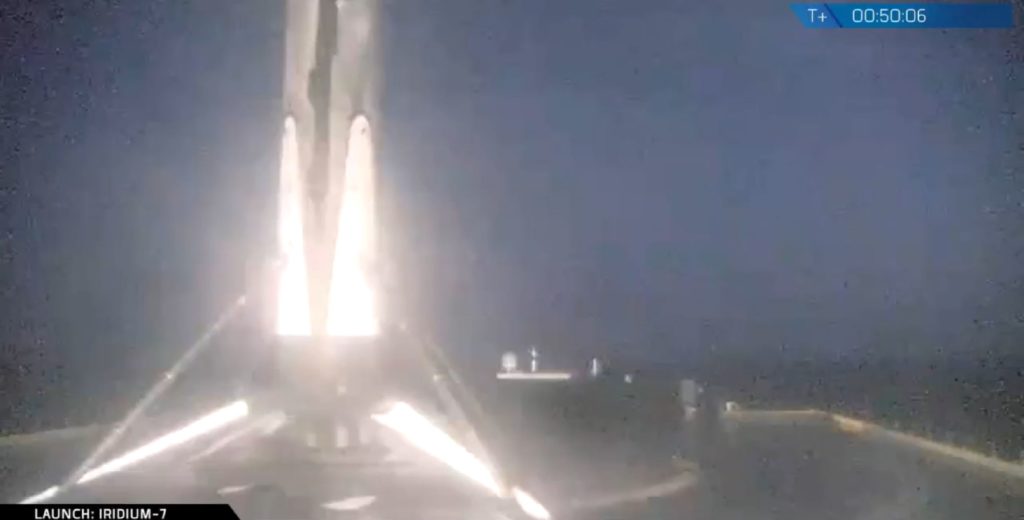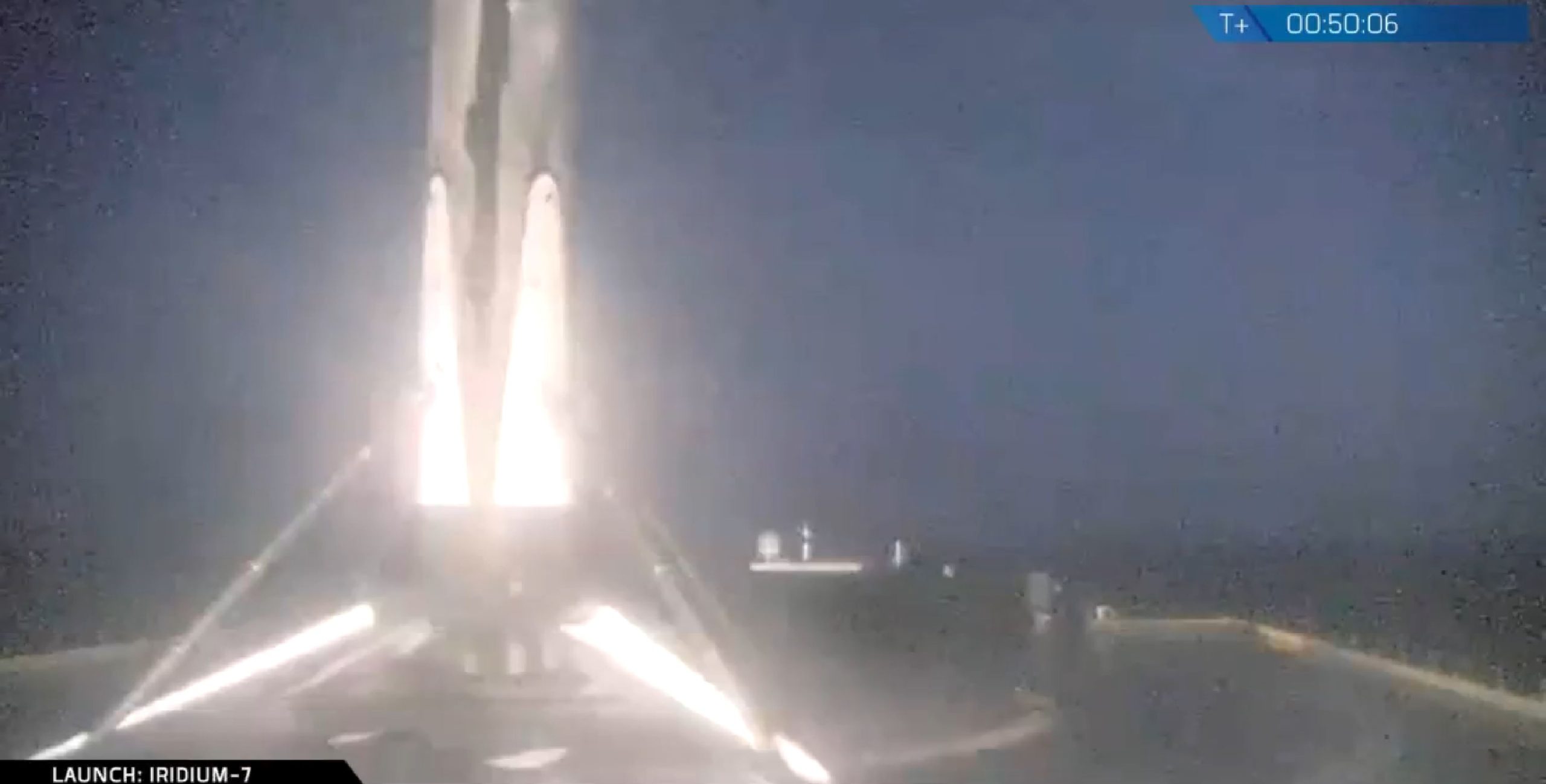
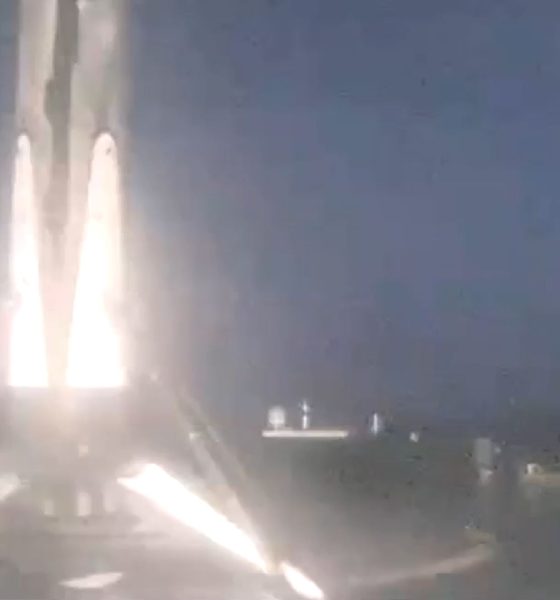
News
SpaceX nails second Falcon 9 landing in 48 hours, fairing catch foiled by weather
Just a handful of days after SpaceX’s second-ever successful launch and landing of their upgraded Falcon 9 Block 5, the company has completed the same feat on the opposite side of the United States, debuting the Block 5 rocket with a launch and booster recovery from California’s Vandenberg Air Force Base (VAFB).
The booster in question, Falcon 9 B1048, is the third Block 5 booster to roll off of SpaceX’s Hawthorne, CA assembly line and is now the first Block 5 rocket to launch from the company’s California launch facilities. On the opposite coast, SpaceX’s second Block 5 Falcon 9 booster (B1047) completed its own successful launch and landing, lofting the heaviest commercial satellite to ever reach orbit (Telstar 19V).
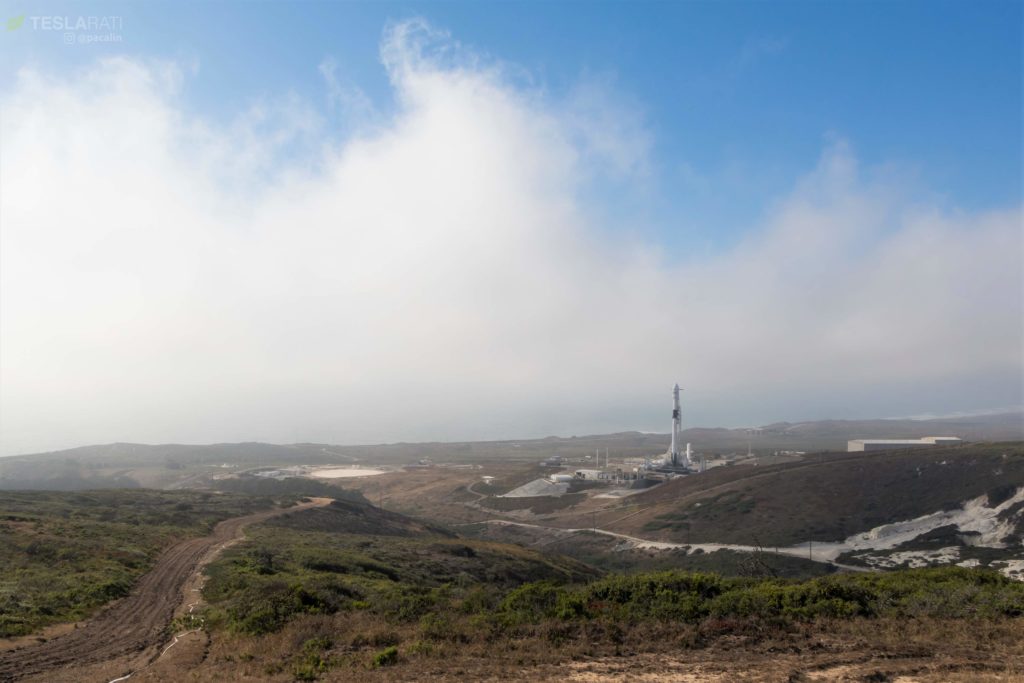
While weather during camera setup was absolutely spectacular, the predawn launch window meant that no sun was available to force the ever-present VAFB fog back over the ocean. (Pauline Acalin)
Seven months, fourteen launches
Today’s near-flawless predawn mission saw Falcon 9 place 10 Iridium NEXT satellites in a polar Earth orbit, during which the rocket’s Block 5 booster completed the first landing on Just Read The Instructions in nearly ten months and Mr Steven made his first attempt at catching a parasailing Falcon fairing with his massive net and arms upgrades. Those upgrades, tracked tirelessly by Teslarati photographer Pauline Acalin for the better part of July, took barely a month to go from a clean slate (old arms and net fully uninstalled) to operational, fairing-catching status, an ode to the incredible pace at which SpaceX moves.
Sadly, the vessel’s Iridium-7 fairing catch attempt was sullied from the start by inclement weather – primarily wind shear – that significantly hampered the accuracy of each fairing halve’s parafoil guidance, meaning that Mr Steven’s crew did see the parasailing halves touch down, but too far away to catch them in Mr Steven’s large net. Falcon 9 B1048 had its own difficulties thanks to what engineer and webcast host John Insprucker described as “the worst weather [SpaceX] has ever had” for a Falcon booster landing. Nevertheless, Falcon 9 appeared to stick an off-center but plenty accurate landing aboard drone ship JRTI, although SpaceX technicians are likely going to wish they had the same robotic stage securer located aboard OCISLY on the opposite coast.
- Just a hint of fog at liftoff. (SpaceX)
- Onboard cameras thankfully came in clutch, providing an absolutely extraordinary view of most phases of launch. (SpaceX)
- After MECO and S2 ignition, there were some ethereal plume interaction effects caught on Falcon 9’s onboard cameras. (SpaceX)
- Also Earth’s limb from inside B1048’s interstage. (SpaceX)
- And more unbelievable plume interaction… (SpaceX)
Just Read The Instructions, on the other hand, was similarly tracked but primarily to verify that nothing was happening – the vessel’s last operational trip to the Pacific Ocean dates back to the first half of October 2017. Since then, SpaceX began a process of intentionally expending Falcon 9 boosters that had already flown once before, choosing to essentially start from scratch with a fresh fleet of highly reliable and reusable Falcon 9 Block 5 boosters rather than recover older versions of the rocket and attempt to refurbish them beyond the scope of their designed lifespans.
The Block 5 design, however, has taken the countless lessons-learned from flying and reflying previous versions of Falcon 9 and rolled them all into one (relatively) final iteration of the ever-changing rocket. With any luck and at least a little more iteration, Falcon 9 Block 5 boosters should be capable of launching anywhere from 10 to 100 times, 10 times with minimal or no refurbishment and 100 times with more regular maintenance, much like high-performance jet aircraft do today.
Looks good, but so many details need to be right. Journey back from hypersonic becomes extremely difficult as velocity increases. Altitude is easy, velocity is hard.
— Elon Musk (@elonmusk) July 23, 2018
With three successful launches of new Block 5 boosters now under the new version’s belt, it’s safe to say that the rocket is off to an extremely good start. The most important milestones to watch for over the next several weeks and months will be the first reflight of a recovered Block 5 rocket, the first reuse of a Falcon 9 payload fairing, and then the first third/fourth/fifth/etc. reuse of Block 5 booster. On the horizon, of course, is SpaceX CEO Elon Musk’s challenge to launch a Falcon 9 Block 5 booster two times in less than 24 hours, and do so before the end of 2019.
2018: I’m watching a livestream of a rocket sending satellites to orbit and then landing on a droneship in the ocean — while watching the company’s other droneship return to port with a rocket that did the same thing on the opposite side of the country three days ago. pic.twitter.com/wWA8ZCBAeY
— John Kraus (@johnkrausphotos) July 25, 2018
Roughly 3,000 miles to the East, SpaceX’s just-recovered Florida Block 5 booster wrapped up a picture-perfect arrival in Port Canaveral aboard drone ship Of Course I Still Love You at the exact same time as another Block 5 rocket was launching (and landing) on the opposite coast.
For prompt updates, on-the-ground perspectives, and unique glimpses of SpaceX’s rocket recovery fleet (including fairing catcher Mr Steven), check out our brand new LaunchPad and LandingZone newsletters!

News
Tesla dominates in the UK with Model Y and Model 3 leading the way
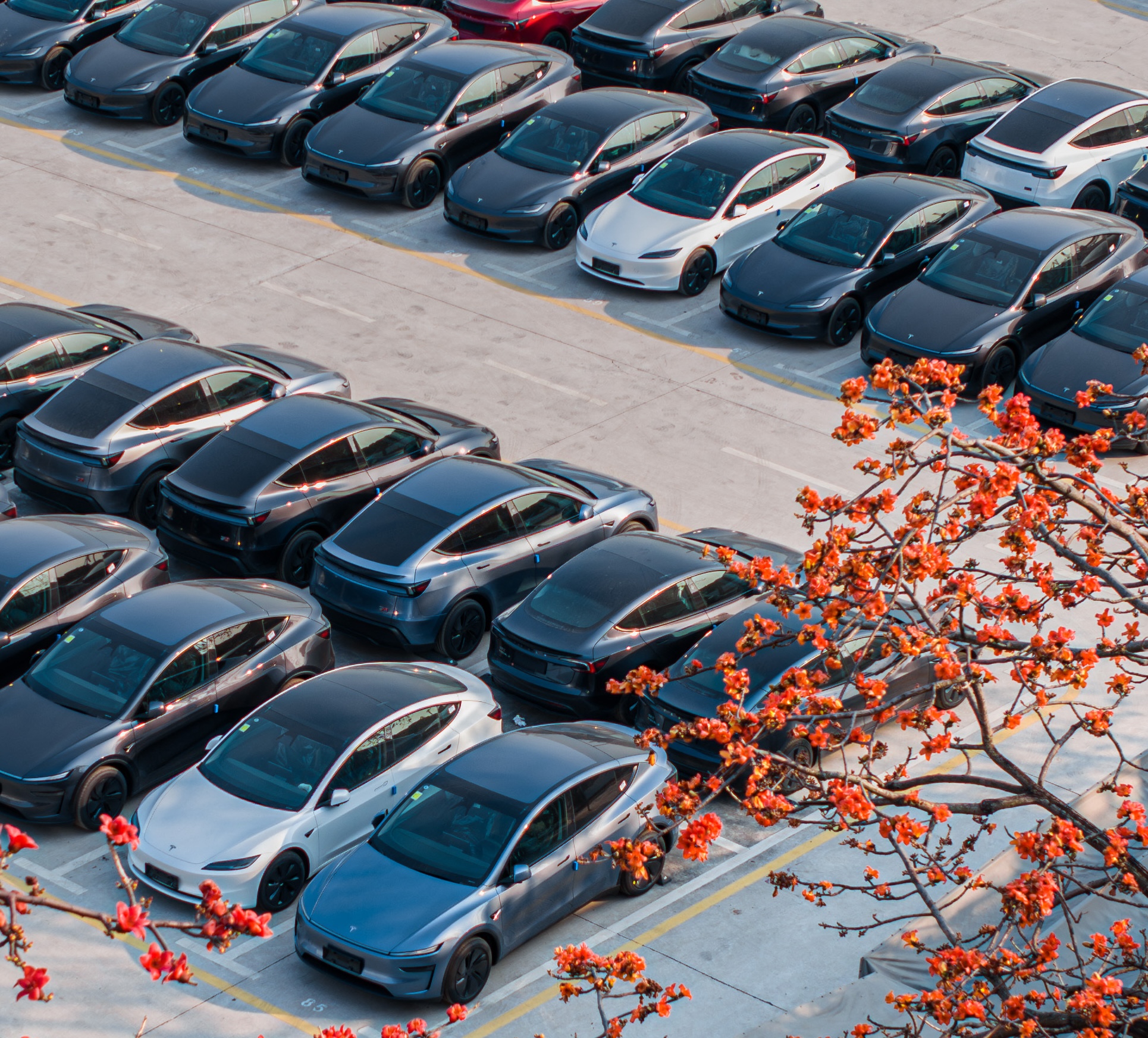
Tesla is dominating in the United Kingdom so far through 2025, and with about two weeks left in the year, the Model Y and Model 3 are leading the way.
The Model Y and Model 3 are the two best-selling electric vehicles in the United Kingdom, which is comprised of England, Scotland, Wales, and Northern Ireland, and it’s not particularly close.
According to data gathered by EU-EVs, the Model Y is sitting at 18,890 units for the year, while the Model 3 is slightly behind with 16,361 sales for the year so far.
The next best-selling EV is the Audi Q4 e-tron at 10,287 units, lagging significantly behind but ahead of other models like the BMW i4 and the Audi Q6 e-tron.
GOOD NEWS 🇬🇧 Tesla is absolutely crushing the UK electric vehicle market in 2025 💥
The numbers are in, and the dominance is clear. With an impressive amount of 42,270 vehicles delivered year-to-date, the brand now commands a solid 9.6% market share of the total auto market 🆒… pic.twitter.com/dkiGX9kzd0
— Ming (@tslaming) December 18, 2025
The Model Y has tasted significant success in the global market, but it has dominated in large markets like Europe and the United States.
For years, it’s been a car that has fit the bill of exactly what consumers need: a perfect combination of luxury, space, and sustainability.
Both vehicles are going to see decreases in sales compared to 2024; the Model Y was the best-selling car last year, but it sold 32,610 units in the UK. Meanwhile, the Model 3 had reached 17,272 units, which will keep it right on par with last year.
Tesla sold 50,090 units in the market last year, and it’s about 8,000 units shy of last year’s pace. It also had a stronger market share last year with 13.2 percent of the sales in the market. With two weeks left in 2025, Tesla has a 9.6 percent market share, leading Volkswagen with 8 percent.
The company likely felt some impact from CEO Elon Musk’s involvement with the Trump administration and, more specifically, his role with DOGE. However, it is worth mentioning that some months saw stronger consumer demand than others. For example, sales were up over 20 percent in February. A 14 percent increase followed this in June.
News
Tesla Insurance officially expands to new U.S. state
Tesla’s in-house Insurance program first launched back in late 2019, offering a new way to insure the vehicles that was potentially less expensive and could alleviate a lot of the issues people had with claims, as the company could assess and repair the damage itself.
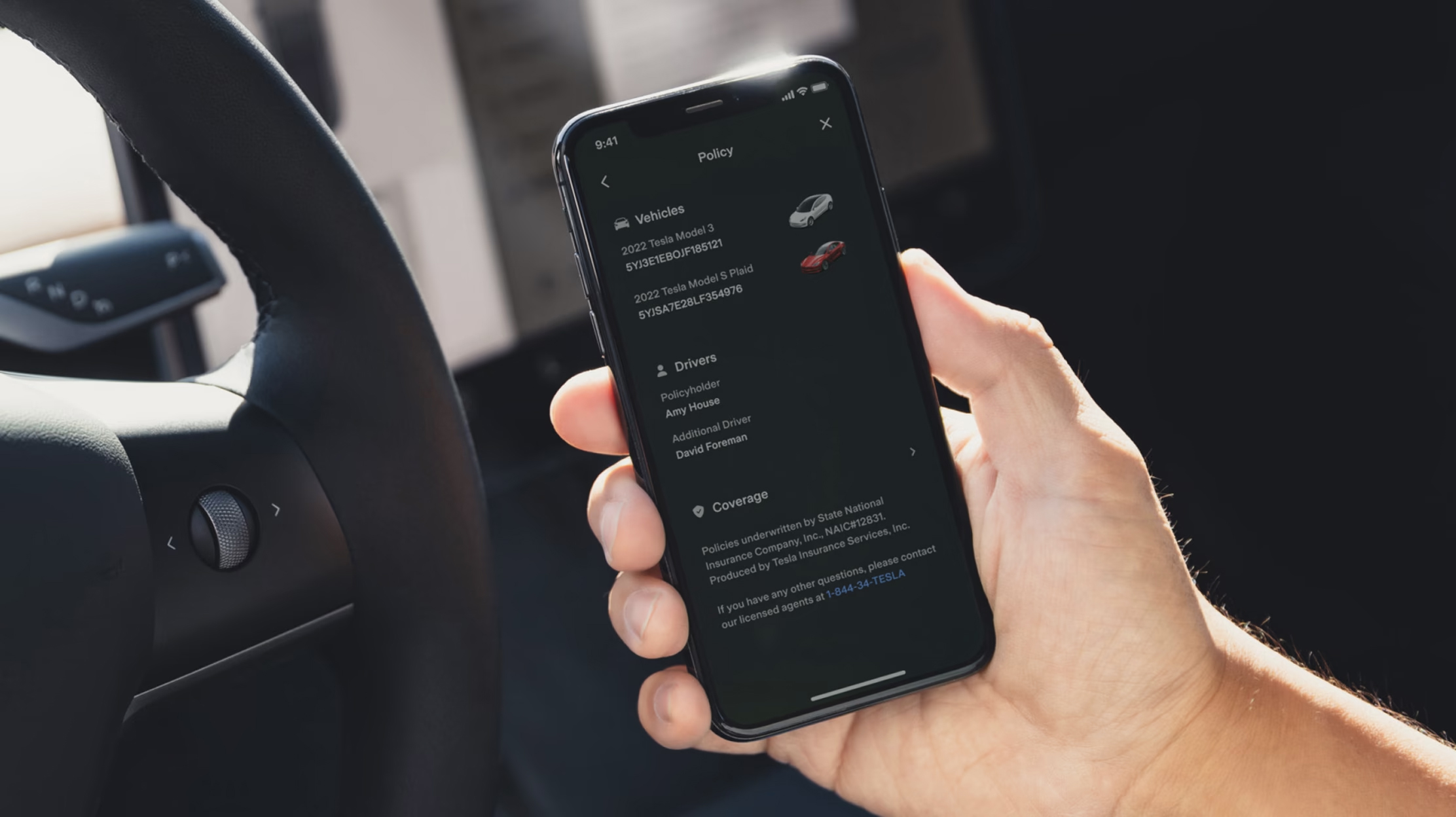
Tesla Insurance has officially expanded to a new U.S. state, its thirteenth since its launch in 2019.
Tesla has confirmed that its in-house Insurance program has officially made its way to Florida, just two months after the company filed to update its Private Passenger Auto program in the state. It had tried to offer its insurance program to drivers in the state back in 2022, but its launch did not happen.
Instead, Tesla refiled the paperwork back in mid-October, which essentially was the move toward initiating the offering this month.
BREAKING: Tesla Insurance has just officially launched in Florida.
This is the first new state to receive @Tesla Insurance in more than 3 years. In total, Tesla insurance is now available in 13 U.S. states (map in thread below of all the states).
Tesla Insurance in Florida uses… pic.twitter.com/bDwh1IV6gD
— Sawyer Merritt (@SawyerMerritt) December 17, 2025
Tesla’s in-house Insurance program first launched back in late 2019, offering a new way to insure the vehicles that was potentially less expensive and could alleviate a lot of the issues people had with claims, as the company could assess and repair the damage itself.
It has expanded to new states since 2019, but Florida presents a particularly interesting challenge for Tesla, as the company’s entry into the state is particularly noteworthy given its unique insurance landscape, characterized by high premiums due to frequent natural disasters, dense traffic, and a no-fault system.
Annual average premiums for Florida drivers hover around $4,000 per year, well above the national average. Tesla’s insurance program could disrupt this, especially for EV enthusiasts. The state’s growing EV adoption, fueled by incentives and infrastructure development, aligns perfectly with Tesla’s ecosystem.
Moreover, there are more ways to have cars repaired, and features like comprehensive coverage for battery damage and roadside assistance tailored to EVs address those common painpoints that owners have.
However, there are some challenges that still remain. Florida’s susceptibility to hurricanes raises questions about how Tesla will handle claims during disasters.
Looking ahead, Tesla’s expansion of its insurance program signals the company’s ambition to continue vertically integrating its services, including coverage of its vehicles. Reducing dependency on third-party insurers only makes things simpler for the company’s automotive division, as well as for its customers.
News
Tesla Full Self-Driving gets sparkling review from South Korean politician
“Having already ridden in an unmanned robotaxi, the novelty wasn’t as strong for me, but it drives just as well as most people do. It already feels like a completed technology, which gives me a lot to think about.”
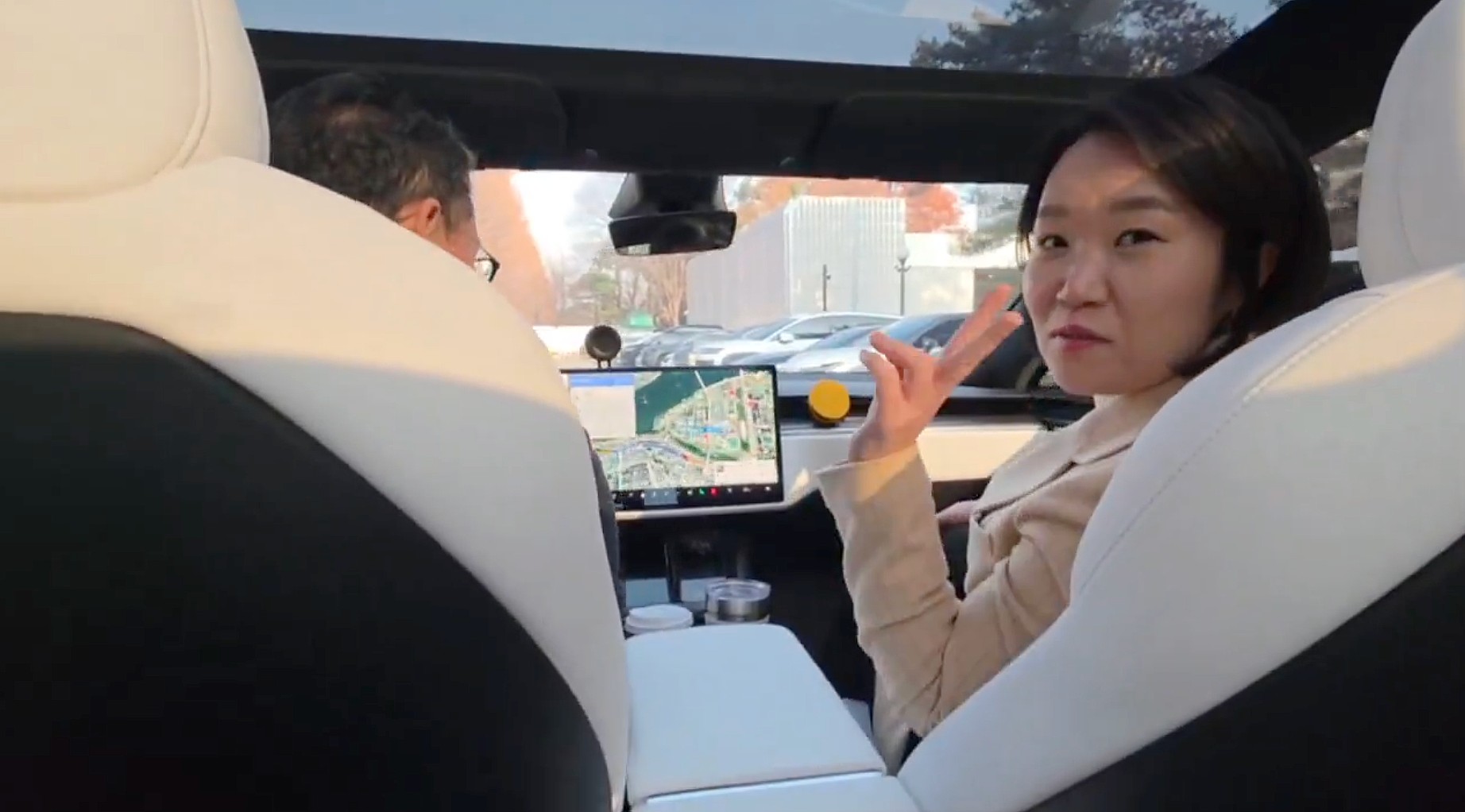
Tesla Full Self-Driving got its first sparkling review from South Korean politician Lee So-young, a member of the country’s National Assembly, earlier this week.
Lee is a member of the Strategy and Finance Committee in South Korea and is a proponent of sustainable technologies and their applications in both residential and commercial settings. For the first time, Lee was able to utilize Tesla’s Full Self-Driving technology as it launched in the country in late November.
Her thoughts on the suite were complimentary to the suite, stating that “it drives just as well as most people do,” and that “it already feels like a completed technology.”
드디어 오늘, 서울에서 테슬라 FSD 체험 했습니다.
JiDal Papa님의 모델S 협찬에 힘입어^^ 파파님 정말 감사합니다.
국회 -> 망원시장 -> 홍익대 -> 국회 복귀 코스였고요.
이미 무인 로보택시를 타봐서 그런지 신기함은
덜했지만, 웬만한 사람만큼 운전을 잘하네요.이미 완성된 기술이라고… pic.twitter.com/8pAidHBpRG
— 이소영 국회의원 (Soyoung Lee) (@im_soyounglee) December 17, 2025
Her translated post says:
“Finally, today I got to experience Tesla FSD in Seoul. Thanks to the Model S sponsored by JiDal Papa^^, I’m truly grateful to Papa. The route was from the National Assembly -> Mangwon Market -> Hongik University -> back to the National Assembly. Having already ridden in an unmanned robotaxi, the novelty wasn’t as strong for me, but it drives just as well as most people do. It already feels like a completed technology, which gives me a lot to think about. Once it actually spreads into widespread use, I feel like our daily lives are going to change a lot. Even I, with my license gathering dust in a drawer, don’t see much reason to learn to drive a manual anymore.”
Tesla Full Self-Driving officially landed in South Korea in late November, with the initial launch being one of Tesla’s most recent, v14.1.4.
It marked the seventh country in which Tesla was able to enable the driver assistance suite, following the United States, Puerto Rico, Canada, China, Mexico, Australia, and New Zealand.
It is important to see politicians and figures in power try new technologies, especially ones that are widely popular in other regions of the world and could potentially revolutionize how people travel globally.
